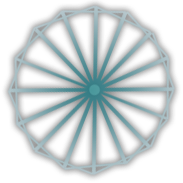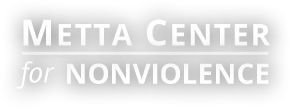Part 2, Week/Lesson 5 – Constructive Program 1
Nonviolence Home › Forums › Book Discussion › Metta Certificate Pilot Program › Part 2, Week/Lesson 5 – Constructive Program 1
- This topic has 4 replies, 5 voices, and was last updated 11 years, 8 months ago by
Erika.
-
AuthorPosts
-
October 7, 2013 at 7:53 pm #11660
Stephanie Steiner
MemberYour assignment prompt for this week says:
Brainstorm a list of examples, then examine one of these initiatives and analyze it through the lens of Gandhi’s constructive programme. Why is it constructive programme? What aspect of the “old story” does this initiative address, or how does it promote a new story? How could this initiative be enhanced by the intentional application of nonviolence?
Please share the examples of constructive program that you explored in your community. What did you find out? What can others learn from what is happening there?
October 18, 2013 at 7:00 am #11668Erika
MemberThere are couple of areas I feel are good places of focus for constructive programming. I do not think that our issues are necessarily the results of a few people in government making harmful choices occasionally but more the results of many of us, me included, making less than ideal choices daily and continually. Two areas that come to mind are shopping and eating.
As Gandhi, and experience, point out no evil system can exist without people’s cooperation. It is tough to illustrate much sympathy for the poor and help them when we rely on them for our products. Almost everywhere that we look, from our clothing to our furniture, we can see that they were produced overseas and most likely under harmful working conditions. The Walmarts and want-to-be Walmarts of the world cannot exist without our cooperation. Such companies are after profits, this is what motivates them, and they can only continue to make such profits if we continue to support their business practices. And this we do in droves. How hard it is to find a t-shirt or article of clothing produced in the United States or Fair Trade unless we are trying. Products made by cheap labor saturate the whole market. The only way our market can be saturated with such products in our economy is if we say this is ok and continually buy them. So instead of just fighting against trade agreements that ensure these conditions exists I think any organization that pushes people away from buying items obtained from the poor in bad working conditions is one that is constructive in that if enough people do it it will truly change our economy.
As a result I think organizations in my area such as Chicago Fair Trade, an organization that works to advance the fair trade movement in Chicago, is one that is constructive. Even shops that exist nationally such as Ten Thousand Villages can be constructive in a way by working to getting fair trade items more prevalent and trying to shift people away from shopping and participating in some of the more negative shopping situations out there. Also, I think another important avenue are websites like Etsy, which allow people to set up virtual shops for their homemade products. I think Etsy is a pretty important tool in shifting the way we do business. Being able to buy a product handmade from your neighbor as opposed to someone in a sweatshop is a considerable ability and I think if we move towards such purchasing it can truly revolutionize our economy.
However how we shop, I think while extremely important, I believe could also be complemented by what we contribute as well. This is where I am having issues. While I do think a move to shopping through Etsy and when buying internationally purchasing fair trade items can make a significant difference I think the other part of the equation is being able to produce something as well for the community. So, I think finding a way where one can contribute to the local economy, such as having some role in the making of a product, is something that can be important as well. I think Etsy and organizations such as Chicago Fair Trade, and Ten Thousand villages etc, if they incorporate a direct way in which an interested individual could become more directly involved in the making of goods as well, besides just supporting them financially, I think this combination of contributing through not only dollars but labor could be a tool for real changes.
The food system is another one that relies on the support of millions of people in this country to be what it is. I think it is lacking, to say it nicely, and changes among consumers and producers could help change the system. Our community, like many others, has a farmers market, which I think is a great opportunity for farmers and consumers to have an impact in shifting the food system of the community. I would consider this as constructive programming. Also, I personally think that any organization that promotes vegetarian eating is one that would also fall under constructive programming. I think it will be hard, if not impossible, to create a culture of non-violence in human relations while there is a culture of violence against the most defenseless creatures there are in this country. I think a change in the perception towards how we relate to food is essential in order to make lasting changes. I believe Gandhi once said that you could tell the greatness of a nation by how they treat their animals. If that is the case the United States has considerable work to do and this is an area that a shift in I believe would make a considerable societal change. In my neighborhood there is a vegetarian restaurant that opened recently. I did not find a vegetarian society that was dedicated only to work in my neighborhood, Oak Park, but I believe there were some in the general area that would include this area.
October 20, 2013 at 1:45 pm #11675Erika
MemberTo be truthful, the only example of a place where I observe people trying to find new ways of being in contrast to the old story of alienation and materialism, is in the newly established neighborhood garden right across the street from my house. You understand that Seattle is a place where there are myriad “P-Patch” gardens (spots where us urban dwellers can ‘sign up’, get on a waiting list…sometimes for as long as 7 years…and then work their patch of ground to grow whatever they want). To me, the P-Patches are a wonderful thing. But, the message I just discovered that I hear from the process is that of “you have to wait for us to make room for you to have a spot to grow your own food”. It occurs to me that my neighbors and I have been resisting that message by first, dreaming our own dream of a gardening spot right here on our own soil. Then, by the landowner on whose property our beds are located, clearing some old trees so that the location is totally in the sun and putting out the invitation to the rest of us to come and plant there! Others in the neighborhood took up the task and did what they could…helped build the frames for the beds, ordered soil and had a Saturday morning raised bed filling party attended by about 20 people! Then, I was able to provide less than perfect vegetable starts from the discard racks at the nursery where I work, as well as some fertilizer and some know how. We now have our own “P-Patch”, the Second Ave NW Neighborhood Garden (not really named that, but that’s what I call it), where 4 families have each claimed a bed to plant and the other three are for whoever wants to plant in them. We aim to support the local food bank with our produce as well as provide veggies for whoever would like them.
This whole project is such a bringing together of folks—neighbors who didn’t even know one another’s names or even that they had little kids who would enjoy learning to garden. It is a dismissal of the old story’s insistence on our separateness, powerlessness and apathy. It promotes our oneness, our diversity (each with skills and interests and preferences) and our capacity to change to old paradigm of a neighborhood where people might just say hello if they pass one another on the street to one where we call one another by name, know the kids and their ages, and work together for a common goal.I have to say that I don’t know how to answer the question about how the intentional application of nonviolence to this initiative would be an enhancement. Maybe some of you have an idea that would help me with this.
Thanks.
Jean 10/20/13October 21, 2013 at 9:46 pm #11679Erika
MemberThis is very interesting, because I definitely thought of fair trade and food as options!
I was looking for an example and realized I did not have to look too far. I work for an organization called National Network for Oral Health Access. It is a membership organization of dental providers working in what we call the “safety-net systems.” Those providers work in underserved communities in the U.S., where people often lack health insurance and access to health care services. The organization was started as a peer support group of Dental Directors working in community health centers. I believe that the community health center movement is a constructive programme.
According to the National Association of Community Health Centers, this model of care was created in order to transform this country’s healthcare system:
America’s Health Centers owe their existence to a remarkable turn of events in U.S. history, and to a few determined community health and civil rights activists working in low-income communities during the 1960s. Millions of Americans, living in inner-city neighborhoods and rural areas throughout the country suffered from deep poverty and a desperate need for health care. Among those determined to seek change was H. Jack Geiger, then a young doctor and civil rights activist. Geiger had studied in South Africa and witnessed how a pioneering community health model had wrought astonishing improvements in public health. (http://www.nachc.com/press-kit.cfm)
I call it a constructive programme as the movement meets many of the criteria:
• Concrete – Though not perfect, it is a specific model of healthcare delivery that addresses shortcomings of the current system of care, which is reactive and emergency-based.
• Constructive – Again, it actually provides the care rather than merely criticizing the old system.
• Nonconfrontational – It is one of the federally funded programs that have strong bipartisan support because of its effectiveness.
• Participation – Anyone can seek care from community health centers (as long as there is availability!).
• Proactive – It provides a model of care that works, and proactively prevents diseases.
• Building the community – They are community-owned clinics, meaning that majority of the governing board has to be actual patients. The centers not only provide healthcare services but also employment opportunities to the community.The movement addresses many aspects of the old story and promotes a new story:
• Community health centers provide care to patients regardless of their income or insurance status.
• Their care is based on the communities’ needs, and their goal is to improve the overall population’s health, not just the individual health.
• Their care is culturally sensitive, often employing people from the communities and translators/bilingual staff.
• They provide innovative care, where in many cases medical and dental providers communicate, because mouth is part of the boy.
• They focus on quality, not quantity of care.How can this initiative benefit from the application of nonviolence? I think one current limitation of the health center movement is that it has placed itself as a “safety-net” system, meaning that it is a place the poor and underseved would fall on, because the mainstream system of care cannot catch them. As a result, it is not very well-known by the American public, and by those who know about it, it is often considered a care system for the poor.
On the contrary, it has the potential to transform the mainstream system. Access to quality health care should be a basic human right, no matter what your income status. Every person deserves an integrated system of care, where he or she is treated as a whole person, not a collection of different body parts. This country needs a more cost-effective system of care delivery.
Trying to establish something like the community health center model as a mainstream type of care will likely meet oppositions, especially from individuals and entities that are profiting from the current insurance-driven model. Opposition will also come from health care providers who like practicing in business-driven practice settings.
One of the real “enemies” I see is the way of thinking that healthcare is a money-making scheme. Application of nonviolence will be necessary in tackling the very issue.
November 5, 2013 at 8:59 am #11709Erika
MemberThe first step of this assignment for me was to identity the prevailing oppressive systems in the world I see today. To arose: corporal rule and male dominance. Identifying constructive programming that would yield progress against the oppressive systems is a difficult task. I have been able to creatively think of some potential programming that would achieve partially what constructive programming is looking to achieve. First, as many have commented along with Nagler, addressing corporal rule could start with taking back our food from corporations and mass agricultural businesses to local farming and community based markets. I feel as though this could destabilize the corporal pharmaceutical system since the system is based on the benefit that medicine is the solution to our physical illnesses rather than clean, organic, unprocessed foods. Additionally, programming that heal the psychological and emotional being in order to address the physical manifestation of dis-ease would slowly take away the power of the corporal rule in medicine. Lastly, practicing reiki and using non-traditional ways of healing instead of the mass produced and short term solution of medicine would help take away the power of the reigning corporations. Additionally, these programs teach and use the concept of holistic development and compassion, thus helping drive change on an emotional and psychological level. This is what Nagler hints at is the constructive program of today: a program that dissolves the “suffering from the damaged image of what the human being is.” He suggests that programming on a physical level such as local farming and salt-making will do little to change the mindset of our society currently. It seems as though we are past the place where these programs would work as effectively as they did in India; we require deeper programming that target the root cause of these issues which Nagler identifies as programming aimed at healing the soul and creating a positive image of the being. This requires holistic education and development of the soul spiritually, physically, mentally, emotionally, and psychologically.
Constructive programming against male dominance could incorporate these programs using a holistic development focusing on gender equality; this is a challenge as programming like this usually are since it requires a complete unraveling of the patriarchal and sexist ideologies that both men and women are taught from an early age. Some programming that I do not think quite reach the level of constructive programming that Gandhi used but are still worthy of noting include the SlutWalk movement and a campaign that uses photography to combat sexual and street harassment. The photography campaign is done by a young women who after being assaulted and harassed verbally while walking takes a photo of the perpetrators. While this campaign along with SlutWalk reclaims power, it lacks in concrete work since most of the protests are symbolic. The only concrete constructive programming that I can identify would be to abstain from the marriage and be self-reliant and sufficient without the income of male. If more and more women chose this path, it could destabilize the oppressive system of marriage (which worldwide is a large cause of abuse, power and control). However, this path is only possible if the woman is able to provide for herself. Additionally, homosexuality while not a choice, or cohabiting/living with women, is a rather interesting constructive programming to the oppressive force of men.
The difficult part of addressing male dominance is that it exists both within the public and private spheres: in the workplace and in the home. While British rule did as well with for example salt, as it ruled in the marketplace and dinner table. However, the dynamic of patriarchal societies and the power of men create the destructive manifestations that take the form of structural violence (lower salaries for women and jobs women work, laws regulating our bodies, etc.) and interpersonal violence (rape, domestic violence, sexual harassment). I guess that what I am trying to say is that the system of male dominance may require numerous constructive programs to address the multitude of oppressions stemming from the oppression. -
AuthorPosts
- You must be logged in to reply to this topic.







